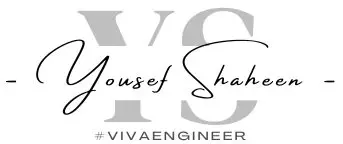Introduction
Artificial Intelligence (AI) is reshaping the way we design, optimize, and innovate across industries. From aerospace to automotive, and even fashion, AI-driven generative design is pushing the boundaries of what’s possible. Imagine designing a jet engine component not just with human intuition but with the precision and efficiency of AI algorithms.
NASA has already demonstrated the power of AI in design by optimizing a spaceflight component, reducing its weight by an astonishing 66% while maintaining its structural integrity. The implications? Lighter parts lead to lower fuel consumption, which translates into significant cost savings. But this isn’t just limited to aerospace—industries worldwide are tapping into AI-driven design optimization to create smarter, more efficient, and sustainable products.
In this article, we’ll explore how AI is transforming design, provide actionable insights on how you can leverage it in your field, and showcase real-world applications that highlight its immense potential.
AI-Powered Design Optimization: Key Takeaways & Actions
1. Generative Design: AI as a Co-Creator
Generative design is an AI-driven approach where algorithms explore countless design permutations based on user-defined constraints and goals. Engineers and designers input parameters such as weight limits, material properties, and performance requirements, and AI generates optimal designs that human designers might never have conceived.
✅ Actionable Insight:
If you’re an engineer, explore AI-driven CAD tools like Autodesk Generative Design, nTopology, and Siemens NX.
If you’re in architecture or industrial design, leverage AI-based parametric design tools such as Rhino’s Grasshopper or Autodesk’s Fusion 360.
Example: Airbus has used AI-powered generative design to develop aircraft components that are lighter yet stronger, reducing material waste and improving efficiency.
2. Lightweighting and Sustainability
Reducing weight while maintaining strength is a major advantage of AI-driven design. This is crucial not just in aerospace but also in the automotive, biomedical, and consumer goods industries.
✅ Actionable Insight:
Car manufacturers can use AI to lightweight vehicle structures, improving fuel efficiency and reducing carbon footprints. Tesla, for instance, uses AI to optimize materials for electric vehicle components.
Biomedical engineers can design lighter, more durable prosthetics and implants using AI-generated structures that mimic organic bone formations.
Example: General Motors leveraged AI-powered design tools to reimagine car parts, resulting in a single component that was 40% lighter and 20% stronger than the traditionally manufactured counterpart.
3. AI in Marketing and Content Creation
While AI is revolutionizing physical design, its capabilities extend to creative and digital fields as well. AI-powered tools can generate high-performing marketing campaigns, optimize website design layouts, and even assist in content writing.
✅ Actionable Insight:
-
Marketers can use ChatGPT, Jasper AI, or Copy.ai to generate compelling content and ad copy.
-
Designers can leverage Adobe Sensei or Runway ML to create AI-enhanced visuals and branding materials.
-
Website optimization can be powered by AI-driven A/B testing tools like Optimizely and Unbounce.
4. AI and Fashion: Designing for the Future
AI isn’t just for engineers and marketers—fashion designers are also harnessing its potential. AI can predict trends, optimize fabric usage, and even generate entire clothing collections.
✅ Actionable Insight:
Designers can use AI tools like Heuritech to analyze fashion trends and predict upcoming styles.
AI-driven software such as CLO 3D enables virtual garment design, reducing waste in prototyping.
Example: Nike leverages AI in sneaker design, using algorithms to optimize comfort, performance, and material efficiency.
How to Leverage AI in Your Field
Regardless of your industry, AI can enhance productivity, creativity, and efficiency. The key is to identify the right tools and integrate them strategically into your workflow.
🚀 Steps to Get Started:
Identify a Repetitive or Time-Intensive Task: Look for areas where AI can automate mundane tasks, whether in design, marketing, or data analysis.
Choose the Right AI Tool: Research and test AI solutions relevant to your field (e.g., generative design tools for engineers, AI writing tools for marketers, predictive analytics for business strategists).
Train and Fine-Tune AI Models: Understand the customization options within AI tools to ensure they align with your specific needs.
Integrate AI into Your Workflow: Start with small projects and gradually expand AI’s role as you gain confidence.
Stay Updated: AI is evolving rapidly—keeping up with new developments ensures you remain competitive.
Conclusion
AI-powered design optimization is transforming industries by making processes more efficient, sustainable, and innovative. From aerospace to marketing, AI is no longer a futuristic concept—it’s a practical tool that enhances creativity and performance.
The question is no longer if AI can help you but how you can best integrate it into your work. Whether you’re an engineer, a marketer, or a designer, AI has the potential to elevate your productivity and creativity to new heights.
What AI tools do you use in your work? Let’s discuss in the comments!
